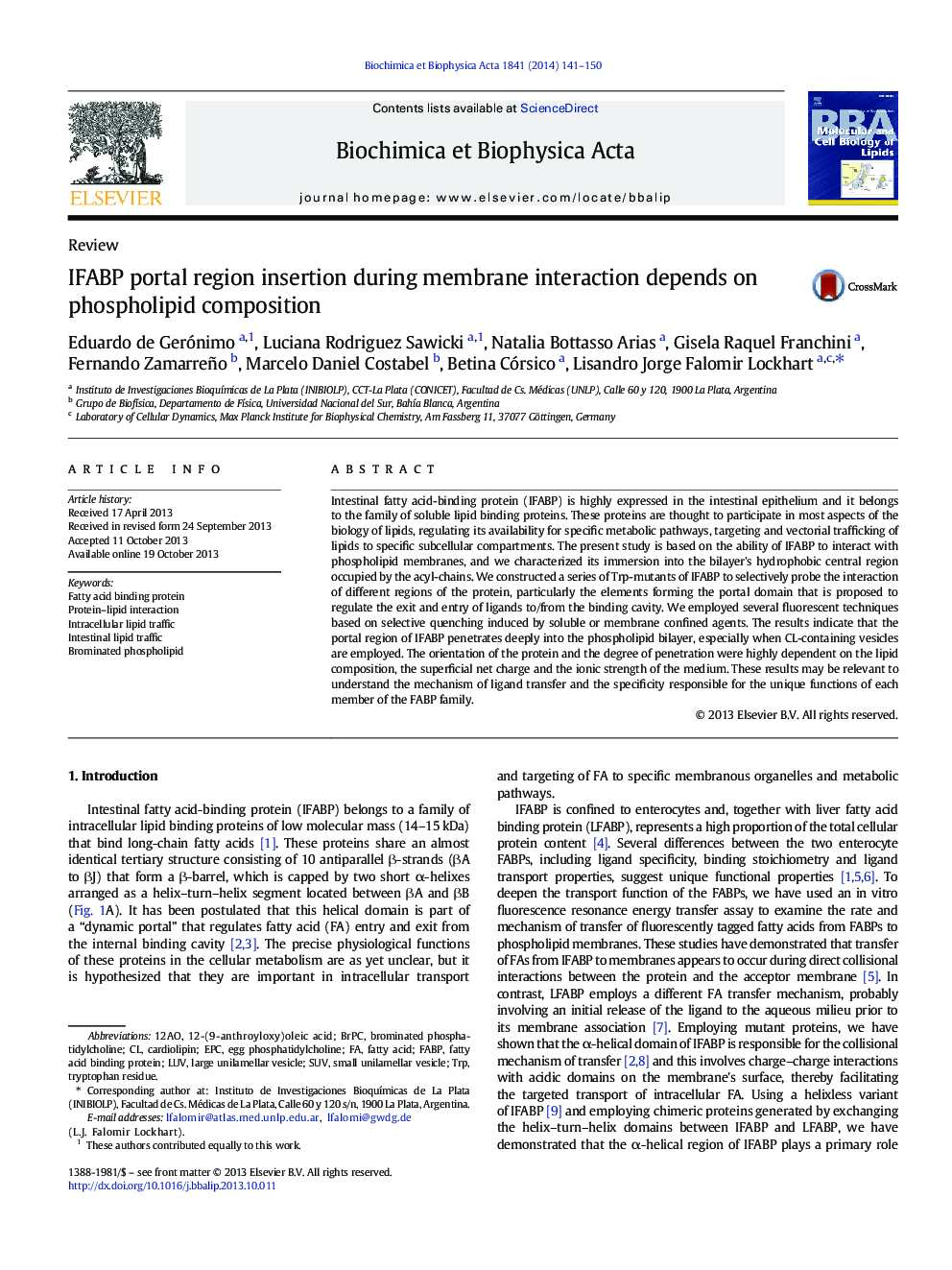| Article ID | Journal | Published Year | Pages | File Type |
|---|---|---|---|---|
| 1949282 | Biochimica et Biophysica Acta (BBA) - Molecular and Cell Biology of Lipids | 2014 | 10 Pages |
•IFABP's portal region is inserted into phospholipid membranes.•Depth and mode of immersion depend on lipid composition and vesicle's charge.•IFABP penetrates deeper into CL-containing phospholipid bilayers.
Intestinal fatty acid-binding protein (IFABP) is highly expressed in the intestinal epithelium and it belongs to the family of soluble lipid binding proteins. These proteins are thought to participate in most aspects of the biology of lipids, regulating its availability for specific metabolic pathways, targeting and vectorial trafficking of lipids to specific subcellular compartments. The present study is based on the ability of IFABP to interact with phospholipid membranes, and we characterized its immersion into the bilayer's hydrophobic central region occupied by the acyl-chains. We constructed a series of Trp-mutants of IFABP to selectively probe the interaction of different regions of the protein, particularly the elements forming the portal domain that is proposed to regulate the exit and entry of ligands to/from the binding cavity. We employed several fluorescent techniques based on selective quenching induced by soluble or membrane confined agents. The results indicate that the portal region of IFABP penetrates deeply into the phospholipid bilayer, especially when CL-containing vesicles are employed. The orientation of the protein and the degree of penetration were highly dependent on the lipid composition, the superficial net charge and the ionic strength of the medium. These results may be relevant to understand the mechanism of ligand transfer and the specificity responsible for the unique functions of each member of the FABP family.
Graphical abstractFigure optionsDownload full-size imageDownload high-quality image (126 K)Download as PowerPoint slide
